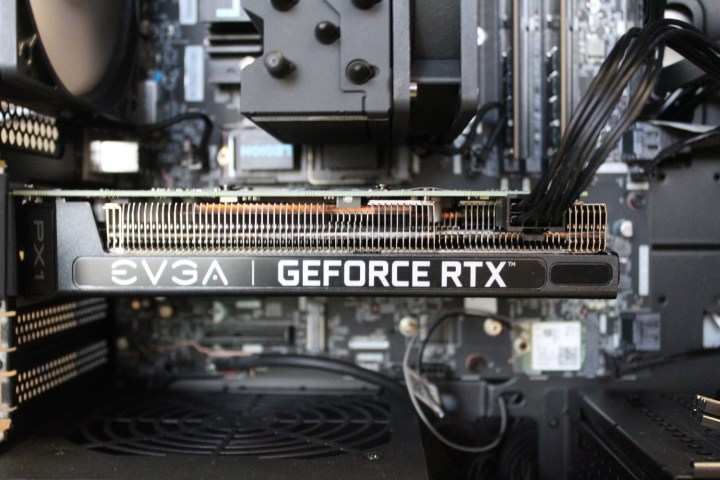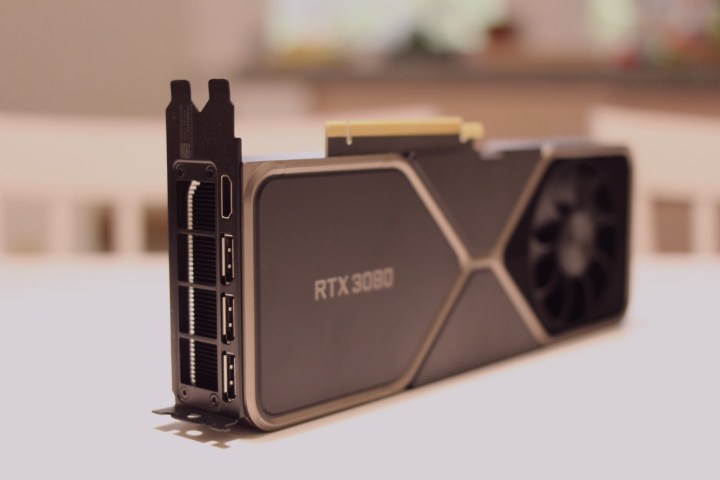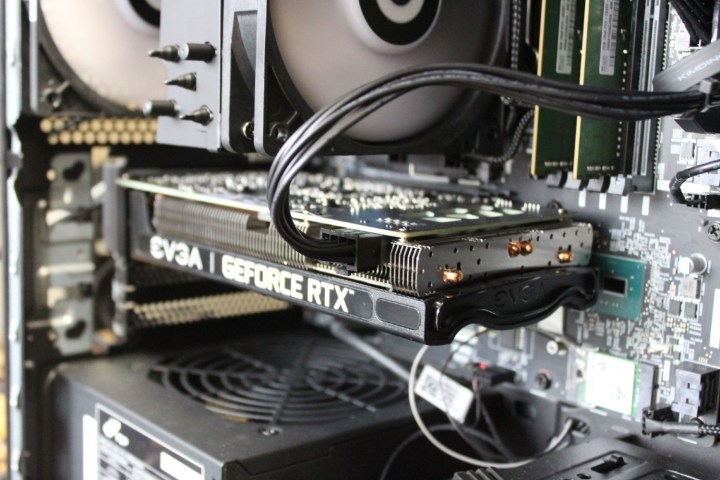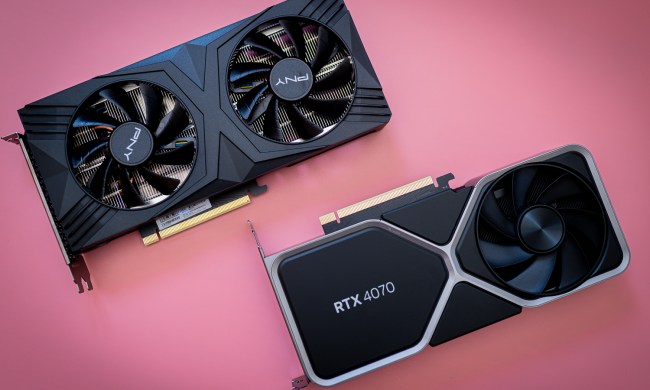Laptops and desktops running Nvidia’s GeForce RTX 3000 graphics just got a new feature this year called Resizable BAR (base address registers). The feature arrived with the debut of the GeForce RTX 3060, and through software drivers coming in March, it will work across Nvidia’s line of 3000 series GPUs on desktop and mobile.
For GeForce gamers, the added support for Resizable BAR means you’ll get a performance boost in select games without having to upgrade to a more expensive GPU, which is definitely good news.
What is Resizable BAR?

Resizable BAR is a feature of the PCI Express interface that Nvidia chose to implement on its latest graphics cards, and it allows the processor and the graphics card to share access to resources for faster data transfer.
In fact, Nvidia’s implementation isn’t unlike what rival AMD previously demonstrated with its Smart Access Memory, which allows its Ryzen processors to better and more efficiently communicate with its Radeon GPUs.
In essence, like AMD’s implementation, Resizable BAR gives the processor access to the VRAM on the graphics cards. With Nvidia’s implementation, Resizable BAR will work with latest GeForce GPUs and processors from both Intel and AMD. Nvidia detailed that any AMD processors powered by that company’s Zen 3 microarchitecture will be compatible, along with Intel’s 10th and 11th Gen processors.
“Intel has been working with Nvidia to enable Resizable BAR, an advanced PCI-Express technology, across the PC ecosystem,” said Fredrik Hamberger, general manager for premium and gaming laptop segments at Intel. “This feature can give gamers an extra boost in gameplay [frames per second] on Intel’s new 11th-generation H/S and select 10th-generation systems when paired with supported graphics cards, including Nvidia GeForce RTX 30 Series GPUs.”
In addition to processor support, Resizable BAR will also require a compatible motherboard.
AMD’s Smart Access Memory, on the other hand, only works with AMD components, and we don’t know of any plans to give Intel processors access to Radeon VRAM.
How does it work?

Prior to the rollout of Resizable BAR, a CPU could access only a small portion of the graphics memory, or VRAM. Traditionally, this is limited to about 256MB, or the maximum capacity that’s allowed with a 32-bit operating system. Each time a CPU needs to communicate with the GPU, the commands are stored on this 256MB portion of the VRAM.
This implementation leads to a bottleneck, as commands must be sequentially queued. Instructions cannot be sent in parallel.
The Resizable BAR addresses this bottleneck in CPU-GPU communication by allowing the processor to negotiate the size of the BAR on the GPU. Essentially, this gives the CPU full access to the VRAM on a processor. By opening up access to the GPU’s memory, the processor can send multiple instructions to the GPU in parallel, which will speed things up.
“As you move through a world in a game, GPU memory (VRAM) constantly transfers textures, shaders, and geometry via many small CPU-to-GPU transfers,” Nvidia explained. “With the ever-growing size of modern game assets, this results in a lot of transfers. Using Resizable BAR, assets can instead be requested as needed and sent in full, so the CPU can efficiently access the entire frame buffer. And if multiple requests are made, transfers can occur concurrently, rather than queuing.”
What do I need to get started?

Resizable BAR debuted with the recent launch of Nvidia’s GeForce RTX 3060 graphics card and mobile RTX 3000 laptops. The feature is also coming to previously launched RTX 3000 series desktop graphics — like the RTX 3090, RTX 3080, RTX 3070, and RTX 3060 Ti — through a software update in March. Be sure to update to the latest Game Ready Driver and VBIOS updates for your GPU.
You’ll also need a compatible processor, and Nvidia detailed that AMD’s Zen 3 processors and Intel’s 10th Gen and 11th Gen CPUs will be supported, so gamers running a modern PC build should experience a performance boost in some titles. This also means you’ll need a Ryzen 5000 chipset, as well as a compatible motherboard for Resizable BAR to work.
“NVIDIA is working with motherboard manufacturers around the world to bring Resizable BAR support to compatible products,” Nvidia stated.
On the AMD side, you’ll need an AMD 400 series or 500 series board, and for Intel, you’ll need a Z490, H470, B460, or H410. Boards from Asus, ASRock, Colorful, EVGA, Gigabyte, and MSI are supported as of February 25, according to an Nvidia bulletin. You should check with your board manufacturer and download any applicable drivers or BIOS update to enable this feature, Nvidia added.
Where will I see a boost?
So far, only eight games work with Resizable BAR:
- Assassin’s Creed Valhalla
- Battlefield V
- Borderlands 3
- Forza Horizon 4
- Gears 5
- Metro Exodus
- Red Dead Redemption 2
- Watch Dogs: Legion
With Nvidia’s March update, support for Resizable BAR will be coming to more titles.
Is this a GeForce-exclusive feature?
Resizable BAR is not exclusive to Team Green gamers. In fact, prior to Nvidia’s announcement, rival AMD had showcased the benefits of staying within the Team Red ecosystem with its own Smart Access Memory, which allows the Ryzen CPU and Radeon GPU to share resources with each other. Early results show that the feature could deliver up to a 15% boost. With Nvidia’s implementation, however, you can mix-and-match and pair your GeForce GPU with a compatible CPU from either Intel or AMD — unlike its rival, Nvidia does not make its own x86 CPU.
“Smart Access Memory is built on features of the PCIe standard and firmware standards, and was developed through extensive validation and platform optimization,” AMD had said of its technology, noting that it wasn’t a proprietary interface exclusive to its own hardware. “We welcome the opportunity to support other hardware vendors in their efforts as part of our ongoing commitment to using common and open standards to improve gaming experiences.”



